How to Fix Yellow Tint in Windows Display
If your monitor or display of your laptop suddenly shows more yellow than usual on the screen, then you should not be surprised. You are not seeing things a yellow tint is a common issue related to the computer display. Sometimes the main reason behind this is a change in software settings, sometimes it because of some third-party software trying to interfere with your display settings, etc. But a few of the times it’s a sign of a hardware malfunction.
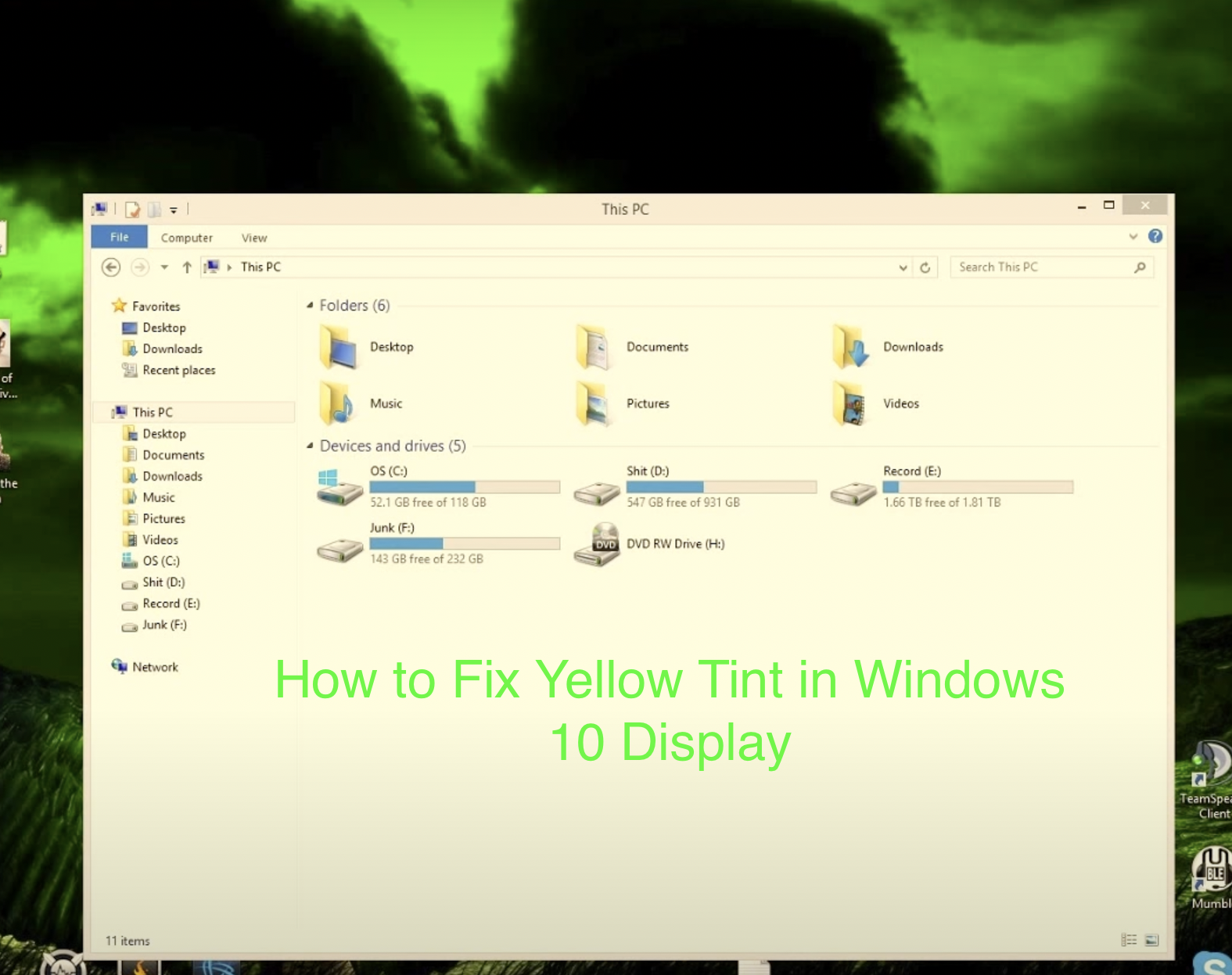
Before you decide to take your display screen for a replacement, you may want to consider troubleshooting the problem yourself and deal with the issue. Most of the time, this can be fixed easily. In this post, we are going to look at some of the most common diagnostics for the appearance of the yellow tint on your display screen and explain how to restore the display screen colors back to normal.
Method 1: Changing Color Profile
Color profiles are like a set of data that tells the system how the colors should look on the screen. Sometimes the colors may seem washed out, while other times a specific color may dominate the display.
Usually, Windows have a balanced scheme of displays colors, but some modifications in the system may cause the color profile to change and colors might seem faded out or worn out. To check if this is causing the yellow tint and changes it, follow these easy steps:
- Open the Control panel and go to Color Management.
- In the Device section, choose the yellow-tinted monitor from the menu.
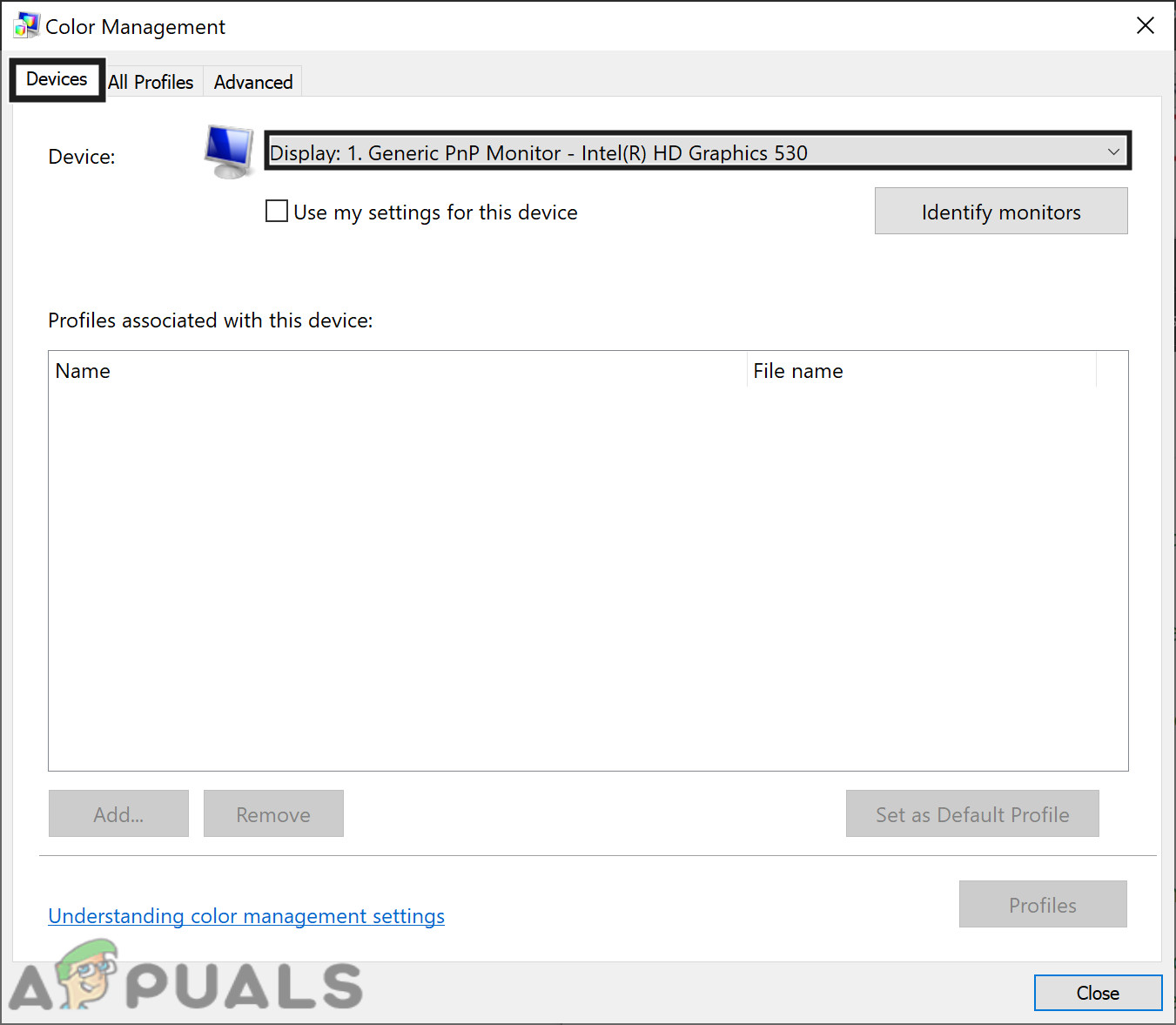
- Now, tick the Use my settings for this device’ option and click the Add button.
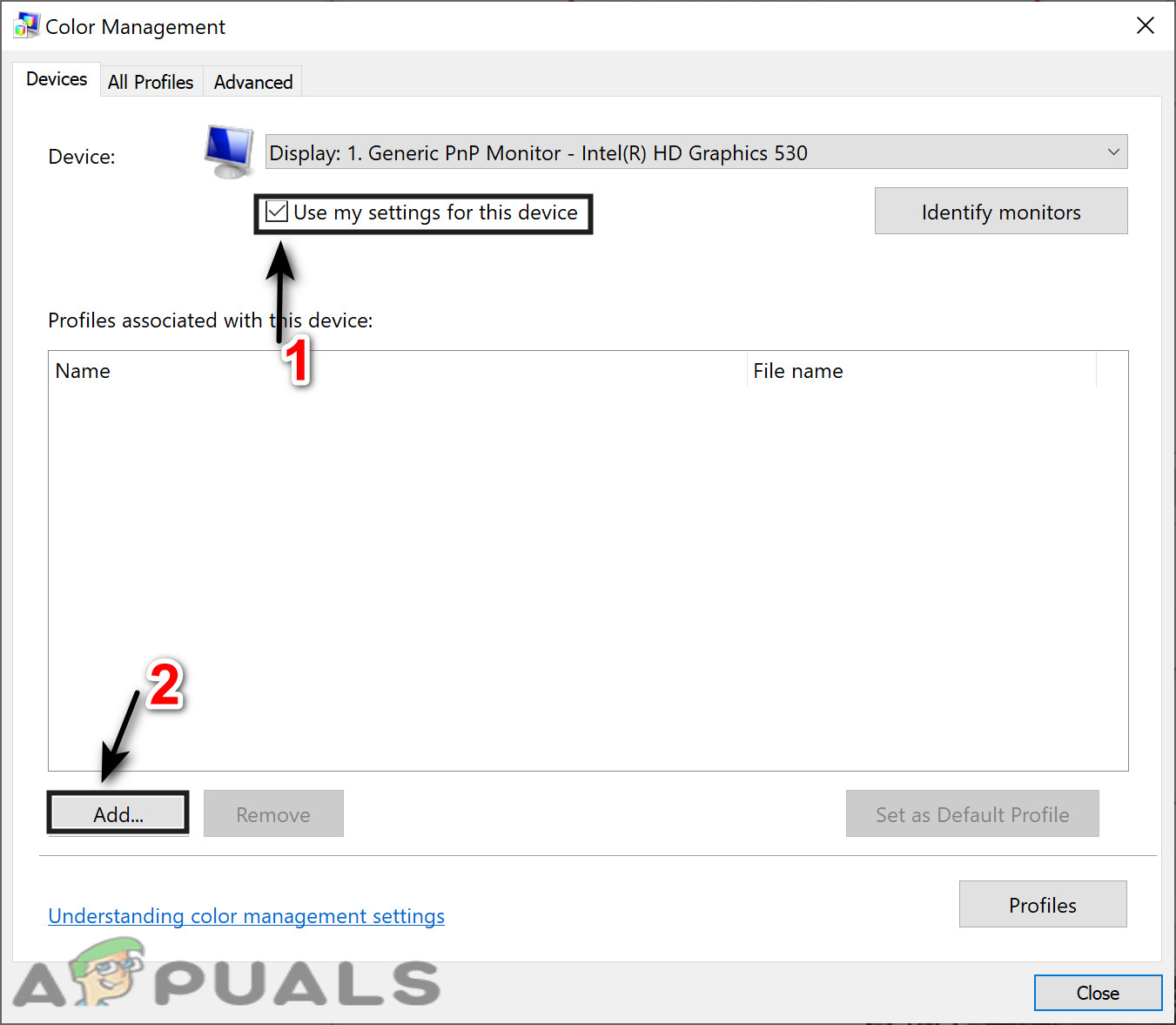
- Select sRGB Virtual Device Model Profile and click OK.
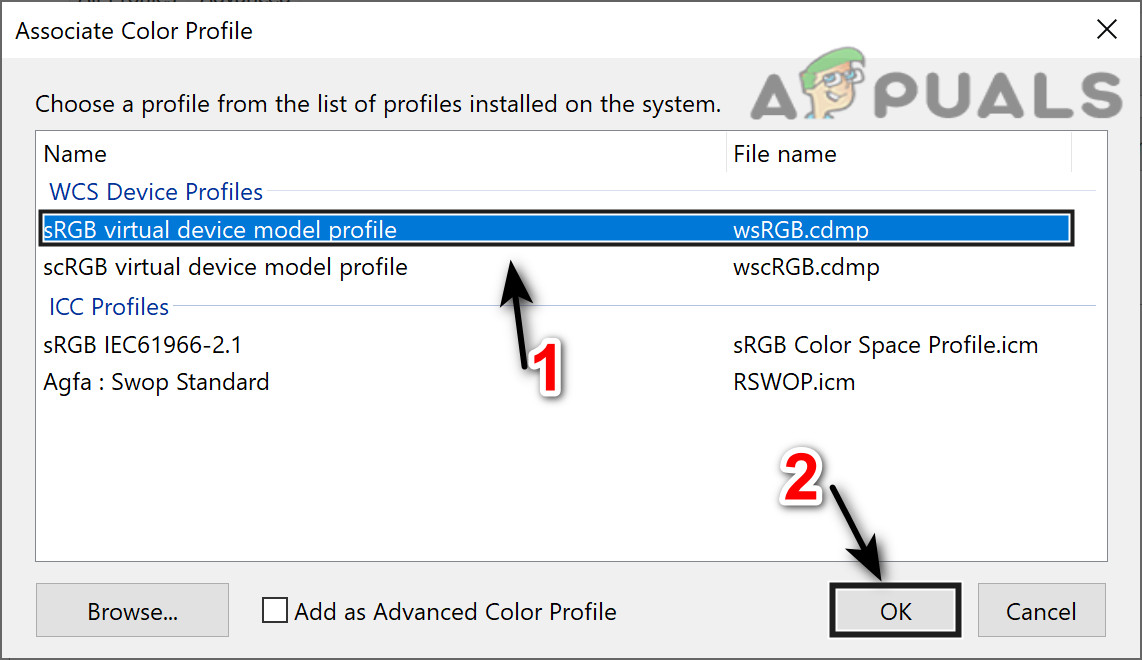
- In the Profiles associated with this device section, select the profile you have added and click on Set as Default Profile.

When you change the color profile to this one, the yellow tint should disappear. If it remains, try out some of the other methods.
Method 2: Disable Night Light
Another common reason for a yellow tint on a monitor or screen is the Night light filter of Windows itself. When it is enabled, it will turn off the bright blue light from the screen and display only warm colors on the screen to protect your eyes from strain. This might have accidentally been turned on, or the Settings may be causing it to activate at a certain time. Fortunately, it is easy to deal with this issue.
- Click on the notification icon on the extreme right side of the taskbar.

- Check if the Night Light filter is turned on. If so, then turn it off.
 Hopefully, this would solve the problem. If not then keep on following the below steps.
Hopefully, this would solve the problem. If not then keep on following the below steps.
Method 3: Check Color Calibration Settings
The Color Calibration feature in windows allows you to make sure that the display produces the colors as accurately as possible. To check if there is something wrong with the calibration settings, or you have accidentally calibrated the colors in a way that it displays yellowish tint on the screen, follow these below steps and adjust them according to what you would want to see:
- Click on the Start button to open the menu, and then type Calibrate.
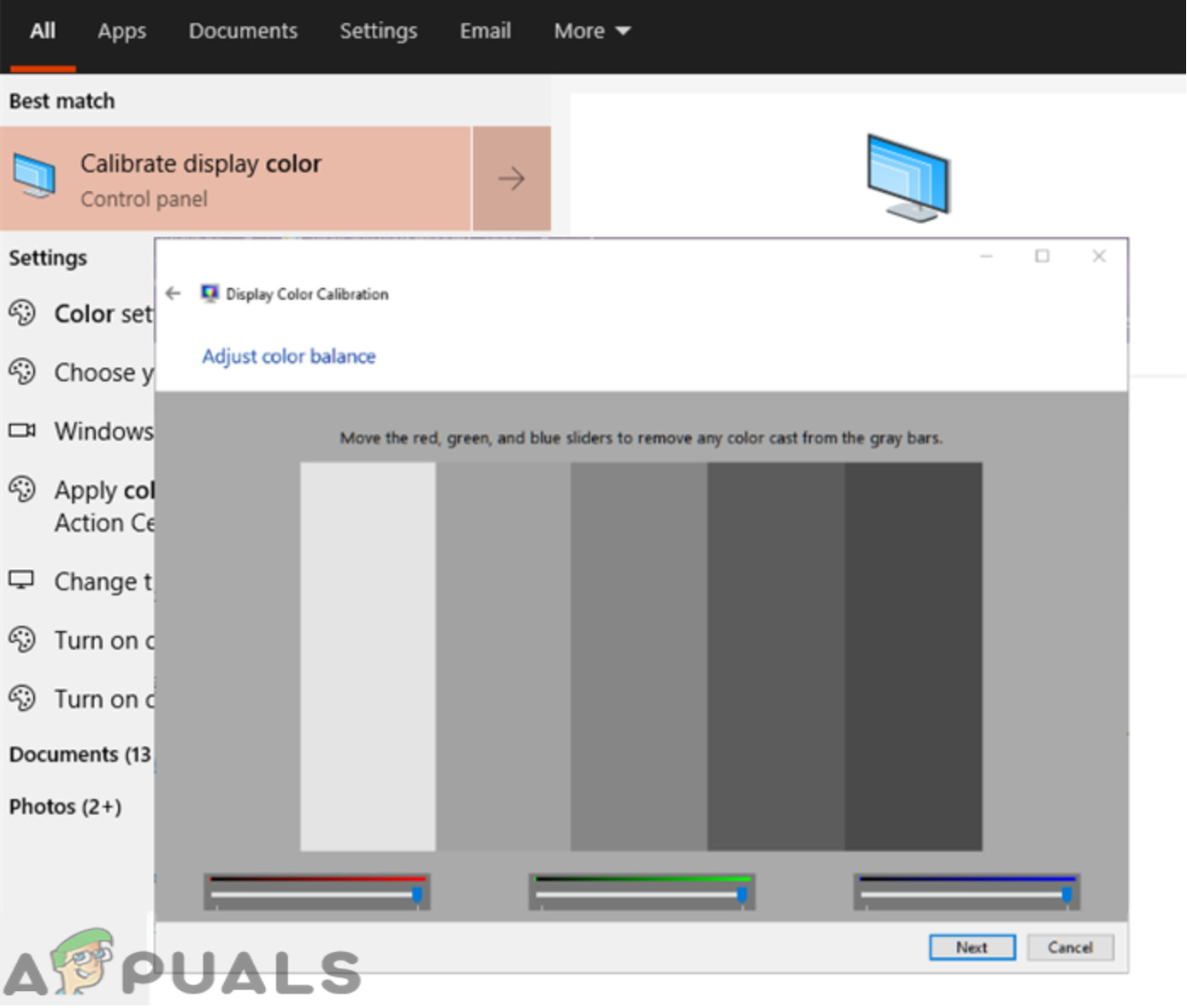
- Next, follow the onboard instruction to get precisely the color you wanted to on the screen.
- During the process, you will get the option to additional colors, and you will have to adjust the slider to remove the tint.
Solution 4: Updating Graphics Drivers
Graphics drivers should update automatically, but sometimes they may skip an update or experience a glitch during installation. In these situations, you may notice some aspects of the video display not working as they should, including the monitor color. To update your video drivers manually, here’s what you need to:
- Type Device Manager in start and open it as an administrator.
- Click the arrow next to Display adapters to expand it.

- Right-click on your video card name and select Update driver and click on Search automatically for updated driver software.

If the system finds an updated version of the drivers it will install them. Do this for all the graphic adapters on your device. In my case, I have a dedicated graphics card so I would have to check for an updated version of its drivers as well. After the system finishes top update the drivers restart your machine for the changes to take effect.
If either of these options doesn’t work out, it’s best to get your display screen replaced or take your monitor or screen to the customer support center of the manufacturer.





